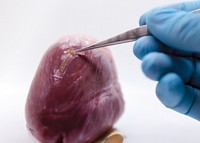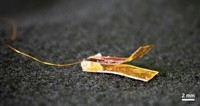Advertisement
Grab your lab coat. Let's get started
Welcome!
Welcome!
Create an account below to get 6 C&EN articles per month, receive newsletters and more - all free.
It seems this is your first time logging in online. Please enter the following information to continue.
As an ACS member you automatically get access to this site. All we need is few more details to create your reading experience.
Not you? Sign in with a different account.
Not you? Sign in with a different account.
ERROR 1
ERROR 1
ERROR 2
ERROR 2
ERROR 2
ERROR 2
ERROR 2
Password and Confirm password must match.
If you have an ACS member number, please enter it here so we can link this account to your membership. (optional)
ERROR 2
ACS values your privacy. By submitting your information, you are gaining access to C&EN and subscribing to our weekly newsletter. We use the information you provide to make your reading experience better, and we will never sell your data to third party members.
Materials
How spongy silicon could open new doors in bioelectronics
New form of silicon boosts element’s biocompatibility and activates neurons with an assist from light
by Matt Davenport
June 27, 2016

Silicon is the best semiconductor on the periodic table for researchers trying to connect smart devices to living cells, says Bozhi Tian of the University of Chicago. Silicon is biocompatible and biodegradable, and scientists have already developed electronic implants and biosensors using silicon. But conventional single-crystalline silicon is inherently rigid, which can prove irritating to living tissue.
Along with Francisco Bezanilla, Tian and his colleagues have now developed spongy silicon particles that are deformable and, therefore, are less likely to inflame their surroundings (Nat. Mater. 2016, DOI: 10.1038/nmat4673). Another key benefit is that amorphous silicon absorbs light better than single crystals, allowing the team to create efficient links to living cells, Tian explains.
The team demonstrated this by attaching single, micrometer-sized particles of its spongy material to rat neurons grown in a dish. When illuminated with green laser light, the particles cause electrical current to flow into the nerve cells. This, in turn, causes the neurons to fire. Although this may sound similar to the optical neural manipulation made possible by genetically modifying cells, or optogenetics, this material could offer a simpler alternative to studying and modifying neural activity. “There’s no genetics,” Tian explains. “Everything is physical.”
The porous silicon material is a “versatile interface to biology,” says John A. Rogers, an electronic materials expert at the University of Illinois, Urbana-Champaign, who was not involved with the study. The particles “exploit both the excellent electronic properties of silicon and its biocompatible, bioresorbable nature,” he adds.
To create the deformable particles, the team used its homemade chemical vapor deposition system to decompose silane gas. Liberated silicon atoms then congregate in the nanoscopic voids of a mesoporous silicon dioxide template. Within the template, the silicon forms amorphous silicon nanowires. The template also allows nanoscopic bridges to grow between these wires.
After the researchers dissolve the template in hydrofluoric acid, they’re left with microscopic networks of wires and bridges. The gaps in the structures are largely responsible for their sponginess, but the property is boosted by a chemical bonus: Silicon oxidizes in air, which helps the porous particles take on water and become squishier in wet conditions.





Join the conversation
Contact the reporter
Submit a Letter to the Editor for publication
Engage with us on Twitter